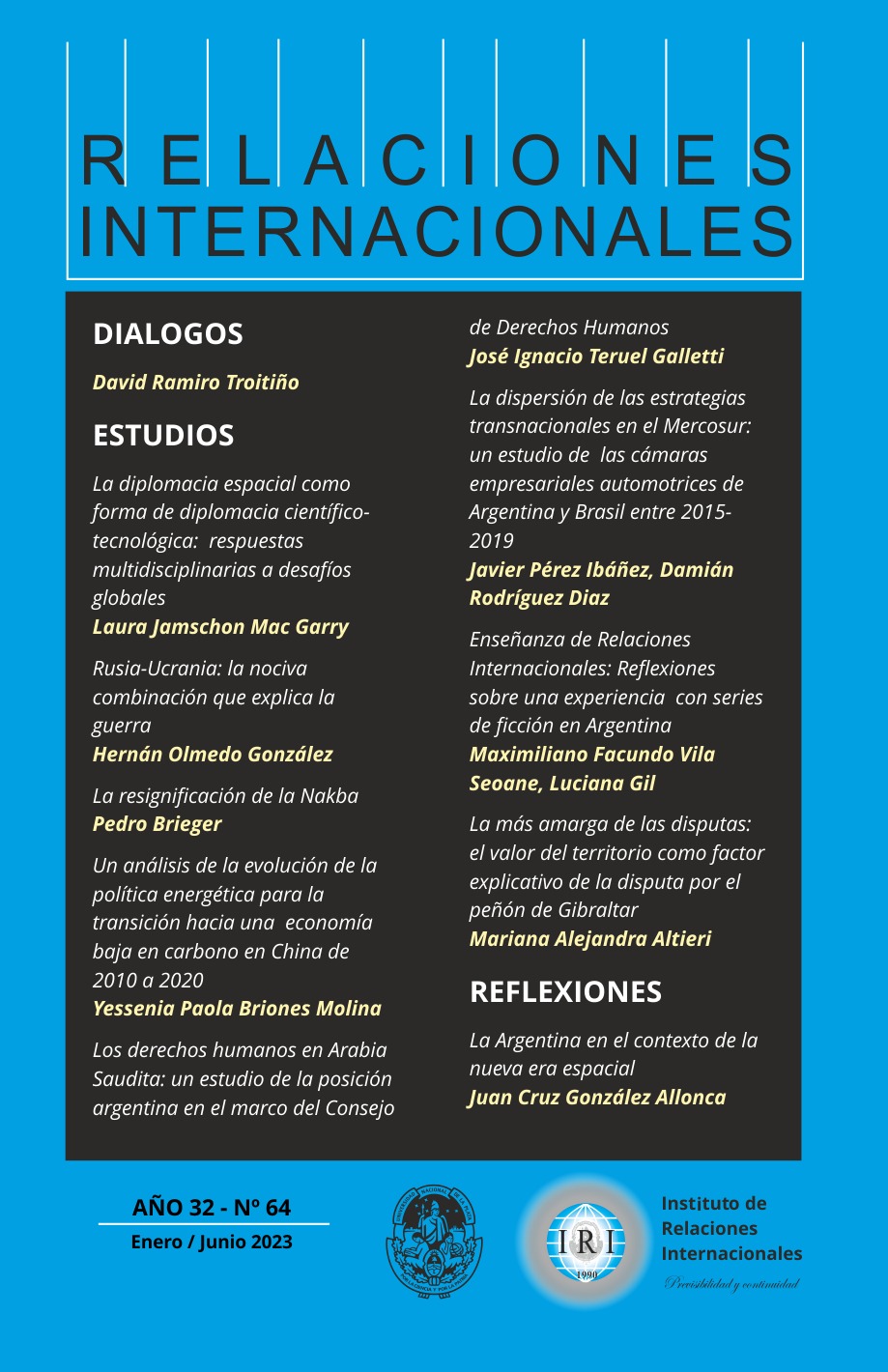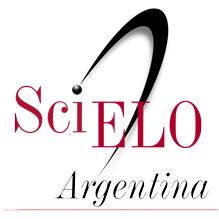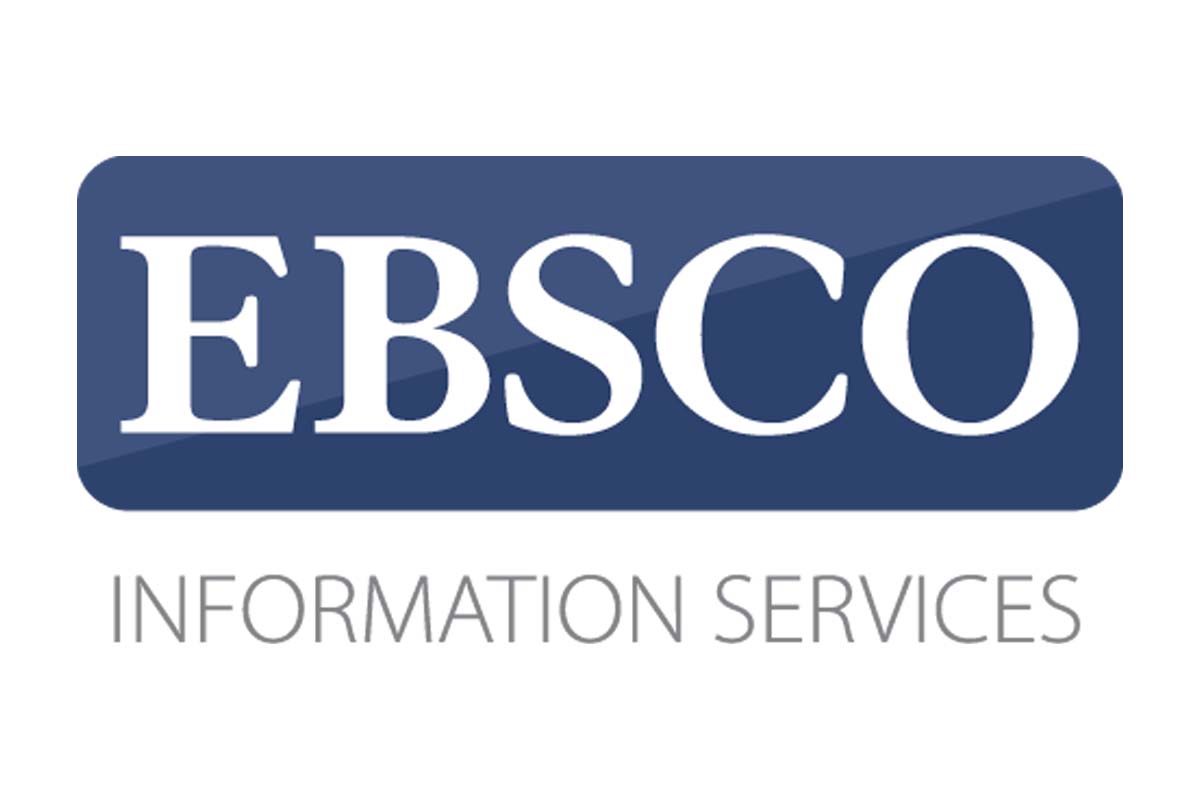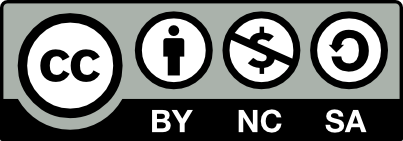La diplomacia espacial como forma de diplomacia científico-tecnológica: respuestas multidisciplinarias a desafíos globales
DOI:
https://doi.org/10.24215/23142766e161Palabras clave:
diplomacia científico-tecnológica, diplomacia espacial, multilateralismo, ONU, espacio ultraterrestreResumen
Si bien en la literatura existe una tendencia a abordar la diplomacia espacial reseñando el conjunto de discusiones que ocupan la agenda multilateral sobre el uso y la exploración del espacio ultraterrestre, no existe un estudio que profundice en dicha noción como una forma de diplomacia científico-tecnológica. Este artículo tiene por fin fundamentar dicha hipótesis sobre la base de dos puntos de intersección entre ambos conceptos: la gobernanza global y la cooperación internacional. A partir de ello, explicará cómo las tres dimensiones de la diplomacia científico-tecnológica –ciencia y tecnología en la diplomacia, ciencia y tecnología para la diplomacia, y diplomacia para la ciencia y la tecnología– se verifican en la práctica en el ámbito espacial.
Referencias
Abdullah, H. y Roig, A. (2021). City-led science diplomacy: building urban sustainability and resilience at the science-policy interface. CIDOB Notes Internacionals, 258.
Andersen, J., Baneke, D. y Madsen, C. (2019). The International Astronomical Union. Uniting the community for 100 years, Springer.
Benkö, M. y Schrogl, K-U. (2000). Space law at UNISPACE III: achievements and perspectives. ZLW, 49(74), 74-93.
Blaauw, A. (1994). History of the IAU. The birth and first half-century of the International Astronomical Union, Springer.
Broniatowski, D. A., Faith, G. R. y Sabathier, V. G. (2006). The case for managed international cooperation in space exploration. Centre for Strategic and International Studies.
Brus, M. y von der Dunk, F. (2006). A european legal regime for commercial utilisation of the International Space Station? En M. Brus y F. von der Dunk (Eds.), The International Space Station. Commercial utilisation from a european legal perspective (pp. 1-8), Martinus Nijhoff Publishers.
Catchpole, J. (2008). The International Space Station: building for the future, Springer-Praxis.
Comisión Europea. (2016). Open innovation, open science, open to the world. A vision for Europe. Publications office of the European Union.
Corte Internacional de Justicia, (1996). Legality of the threat or use of nuclear weapons, Advisory Opinion. ICJ Reports 126.
Corte Internacional de Justicia. (1997). Gabčíkovo-Nagymaros Project (Hungary/Slovakia), Judgement. ICJ Reports 7, 25.
Corte Internacional de Justicia. (2010). Pulp Mills on the River Uruguay (Argentina v. Uruguay), Judgement. ICJ Reports 14.
Flink, T. y Rüffin, N. (2019). The current state of the art of science diplomacy. En W. Canzler, S. Kuhlmann y D. Simon (Eds.), Handbook on science and public policy (pp. 104-121). Edward Elgar.
Frischauf, N. (2011). Space exploration. En C. Brünner y A. Soucek (Eds.), Outer space in society, politics and law (pp. 97-109), Springer.
Gallucio, M. (2021). Science and diplomacy. Negotiating essential alliances, Springer.
Gluckman, P. D., Turekian, V. C., Grimes, R. W. y Kishi, T. (2017). Science diplomacy: a pragmatic perspective from the inside. Science & Diplomacy, 6(4), 1-13.
Gore, M. L., Nichols. E. S. y Lips, K. R. (2020). Preparing scientists for science diplomacy requires new science policy bridges. The Hague Journal of Diplomacy, 15(3), 424-434.
Gual Soler, M. (2020). Diplomacia científica en América Latina y el Caribe. Estrategias, Mecanismos y perspectivas para fortalecer la diplomacia de la ciencia, tecnología e innovación. Organización de las Naciones Unidas para la Educación, la Ciencia y la Cultura.
Herz, J. H. (1950). Idealist internationalism and the security dilemma. World Politics, 2(2), 157-180. https://doi.org/10.2307/2009187
Hobe, S. y Tronchetti, F. (2015). Historical background and context (SB Declaration). En S. Hobe, B. Schmidt-Tedd y K-U. Schrogl (Eds.), Cologne commentary on space law (pp. 306-318). Carl Heymanns Verlag.
Jakhu, R. y Pelton, J. (Eds.) (2017). Global space governance: An international study. Springer.
Jasentuliyana, N. (1994). Ensuring equal access to the benefits of space technologies for all countries. Space Policy, 10(1), 7-18. https://doi.org/10.1016/0265-9646(94)90036-1
Jasentuliyana, N. (1995). Basic space science and developing countries. Space Policy, 11(2), 89-94. https://doi.org/10.1016/0265-9646(95)00003-U
Johnson, C. (2011). Policy and law aspects of international cooperation in space. En Proceedings of the 54th IISL Colloquium on the law of outer space.
Krasnyak, O. (2020). Russian science diplomacy. Diplomatica, 2(1), 118-134.
Krasnyak, O. (2018). The Apollo–Soyuz test project: Construction of an ideal type of science diplomacy. The Hague Journal of Diplomacy, 13(4), 410-431. https://doi.org/10.1163/1871191X-12341028
Krasnyak, O. (2020). Science diplomacy and soviet-american academic and technical exchanges. The Hague Journal of Diplomacy, 15(3), 398-408. https://doi.org/10.1163/1871191X-BJA10025
Marchisio, S. (2009). Article IX. En S. Hobe, B. Schmidt-Tedd. y K-U. Schrogl (Eds.), Cologne commentary on space law (pp. 574-614). Carl Heymanns Verlag.
Mauduit, J. C. (2017). Open skies policies in astronomy: the growing need for diplomacy on the final frontier. Science & Diplomacy, 6(2). https://discovery.ucl.ac.uk/id/eprint/10083725
Melchor, L. (2020). What is a science diplomat? The Hague Journal of Diplomacy, 15(3), 409-423. https://doi.org/10.1163/1871191X-BJA10026
Melchor, L., Elorza, A. y Lacunza, I. (2020). Calling for a systemic change: Towards a European Union science diplomacy for addressing global challenges. S4D4C Policy Report, 1.
Müller, J. M. y Bona, M. (2018). Past, present, and future of science diplomacy in Europe. Science & Diplomacy, 7(3), 7.
Nye, J. (2004). Soft Power. The Means to success in World Politics. PublicAffairs.
Organización de las Naciones Unidas. (1963). Report of the 18th session of COPUOS (Doc. ONU A/5482).
Organización de las Naciones Unidas. (1964). Report of the 19th session of COPUOS (Doc. ONU A/5785).
Organización de las Naciones Unidas. (1990). Avances científicos y tecnológicos y su repercusión en la seguridad internacional (Doc. ONU A/45/568).
Organización de las Naciones Unidas. (1992). Diplomacia preventiva, establecimiento de la paz y mantenimiento de la paz. Informe del Secretario General presentado de conformidad con la declaración aprobada el 31 de enero de 1992 en la Reunión de la Cumbre del Consejo de Seguridad (Doc. ONU A/47/277 S/24111).
Organización de las Naciones Unidas. (1992). Report of the United Nations Conference on environment and development (Doc. ONU A/CONF.151/26, Vol. I)
Organización de las Naciones Unidas. (1993). Study on the application of confidence-building measures in outer space: Report by the Secretary-General (Doc. ONU A/48/305).
Organización de las Naciones Unidas. (2012). Gente resiliente en un planeta resiliente: un futuro que vale la pena elegir (Doc. ONU A/66/700).
Organización de las Naciones Unidas. (2013). Grupo de expertos gubernamentales sobre medidas de transparencia y fomento de la confianza en las actividades relativas al espacio ultraterrestre (UN Doc. A/68/189).
Organización de las Naciones Unidas. (2016). 50º aniversario de la conferencia de las Naciones Unidas sobre la exploración y utilización del espacio ultraterrestre con fines pacíficos: la comisión sobre la utilización del espacio ultraterrestre con fines pacíficos y la gobernanza global de las actividades en el espacio ultraterrestre (Doc. ONU A/AC.105/1137).
Organización de las Naciones Unidas. (2017). Informe del 56° periodo de sesiones de la subcomisión de asuntos jurídicos (Doc. ONU A/AC.105/1122).
Organización de las Naciones Unidas. (2017). The Dark and Quiet Skies proposal as an initiative under the auspices of the committee on the peaceful uses of outer space for protecting the environmental observing conditions for large astronomical observatories and world citizens (Doc. ONU A/AC.105/C.1/2017/CRP.17).
Organización de las Naciones Unidas. (2021). Documento de trabajo preparado por Chile, Eslovaquia, España, la Unión Astronómica Internacional, el Observatorio Europeo Austral y Square Kilometre Array Observatory (Doc. ONU A/AC.105/C.1/L.396).
Organización de las Naciones Unidas. (2021). Informe sobre la conferencia Naciones Unidas/España/Unión Astronómica Internacional sobre cielos oscuros y silenciosos para la ciencia y la sociedad (Doc. ONU A/AC.105/1255).
Organización de las Naciones Unidas. (2021). Los avances científicos y tecnológicos actuales y sus posibles efectos en las iniciativas relacionadas con la seguridad internacional y el desarme (Doc. ONU A/76/182).
Organización de las Naciones Unidas. (2021). Nuestra Agenda Común: informe del secretario general.
Organización de las Naciones Unidas. (2021). Proposal for a single issue/Item for discussion at the fifty-ninth session of the Scientific and Technical Subcommittee in 2022 on general exchange of views regarding satellite system effects upon terrestrial-based astronomy (Doc. ONU A/AC.105/C.1/2021/CRP.24).
Organización de las Naciones Unidas. (2021). Recommendations to keep dark and quiet skies for science and society (Doc. ONU A/AC.105/C.1/2021/CRP.17).
Organización de las Naciones Unidas. (2022). Borrador de informe del 59° periodo de sesiones de la subcomisión de asuntos científicos y técnicos (Doc. ONU A/AC.105/C.1/L.394/Add).
Pankova, L. V., Gusarova, O. V. y Stefanovich, D. V. (2021). International cooperation in space activities amid great power competition. Russia in Global Affairs, 19(4), 97-117. https://doi.org/10.31278/1810-6374-2021-19-4-97-117
Polkowska, M. (2020). Space diplomacy-future perspective. Humanities and Social Sciences, 27(3), 121-128. https://doi.org/10.7862/rz.2020.hss.33
Retré, J., Russo, P., Lee, H., Penteado, E., Salimpour, S., Fitzgerald, M., Ramchandani, J. Pössel, M., Scorza, C., Christensen, L. L., Arends, E., Pompea, S. y Schrier, W. (2019). Big ideas in astronomy. A proposed definition of astronomy literacy. Universiteit Leiden.
Rotola, G. y Williams, A. (2021). Regulatory context of conflicting uses of outer space: astronomy and satellite constellations. Air and Space law, 46(4/5), 545-568. https://doi.org/10.54648/aila2021031
Royal Society. (2010). New frontiers in science diplomacy: navigating the changing balance of power. RS Policy Document 01/10.
Ruffini, P.B. (2017). Science and diplomacy. A new dimension of international relations. Springer.
Ruffini, P. B. (2020). Introduction to the forum on science diplomacy. The Hague Journal of Diplomacy, 15(3), 355-358. https://doi.org/10.1163/1871191X-BJA10033
Ruggles, C. (2015). The IAU’s involvement in the astronomy and World Heritage Initiative: achievements and challenges. Astronomy in Focus, 11(A29A), 89-92. https://doi.org/10.1017/S1743921316002453
Saint-Martin, A. (2009). The creation of the International Astronomical Union as a result of scientific diplomacy. Proceedings of the International Astronomical Union, 5(S260), 202-206. https://doi.org/10.1017/S1743921311002298
Sharpe, C. y Tronchetti, F. (2015). Legal aspects of public manned spaceflight and space station operations. En F. von der Dunk (Ed.), Handbook of space law (pp. 618-661). Edward Elgar.
Turekian, V. C., Macindoe, S., Copeland, D., Davis, L. S., Patman, R. G. y Pozza, M. (2015). The emergence of science diplomacy. En L. Davis y R. G. Patman (Eds.), Science diplomacy. New day or false dawn (pp. 3-24.). World Scientific Publishing.
Valls-Gabaud, D. y Boksenberg, A. (2009). The role of astronomy in society and culture. Proceedings of the International Astronomical Union, 5(S260), 4-8. https://doir.org/10.1017/S1743921311002079
van Langenhove, L. (2019). Who cares?: Science diplomacy and the global commons. Australian Quarterly, 90(4), 18-27. https://search.informit.org/doi/10.3316/informit.660768131574875
Voronina, A. (2016). The how’s and why’s of international cooperation in outer space: International legal forms of cooperation of states in exploration and use of outer space. [Tesis de investigación] Universidad de Nebraska. DigitalCommons@University of Nebraska – Lincoln.
Wallensteen, P. (2014). Dag Hammarskjöld’s diplomacy: lessons learned. En C. Stahn y H. Melber (Eds.). Peace diplomacy, global justice and international agency. Rethinking human security and ethics in the spirit of Dag Hammarskjöld (pp. 364-386). Cambridge University Press.
Ward, W. W. y Floyd, F. W. (1989). Thirty years of research and development in space communications at Lincoln Laboratory. The Lincoln Laboratory Journal, 2, 5-34.
Wolfrum, R. (s.f). Cooperation. En Max Planck Encyclopedias of Public International Law.
Descargas
Publicado
Número
Sección
Licencia
Derechos de autor 2023 Laura Jamschon Mac Garry

Esta obra está bajo una licencia internacional Creative Commons Atribución-NoComercial-SinDerivadas 4.0.
Aquellos autores/as que tengan publicaciones con esta revista, aceptan los términos siguientes:
- Los autores/as conservarán sus derechos de autor y garantizarán a la revista el derecho de primera publicación de su obra. A partir de noviembre del 2020 los artículos se publicarán en la revista bajo una licencia Creative Commons Atribución- NoComercial-CompartirIgual 4.0 Internacional (CC BY-NC-SA 4.0). Acorde a estos términos, el material se puede compartir (copiar y redistribuir en cualquier medio o formato) y adaptar (remezclar, transformar y crear a partir del material otra obra), siempre que a) se cite la autoría y la fuente original de su publicación (revista y URL de la obra), b) no se use para fines comerciales y c) se mantengan los mismos términos de la licencia.
Previo a esta fecha los artículos se publicaron en la revista bajo una Licencia de reconocimiento de Creative Commons (BY-SA 2.5). - Los autores/as podrán adoptar otros acuerdos de licencia no exclusiva de distribución de la versión de la obra publicada (p. ej.: depositarla en un archivo telemático institucional o publicarla en un volumen monográfico) siempre que se indique la publicación inicial en esta revista.
- Se permite y recomienda a los autores/as difundir su obra a través de Internet (p. ej.: en archivos telemáticos institucionales o en su página web) antes y durante el proceso de envío, lo cual puede producir intercambios interesantes y aumentar las citas de la obra publicada. (Véase El efecto del acceso abierto).

























